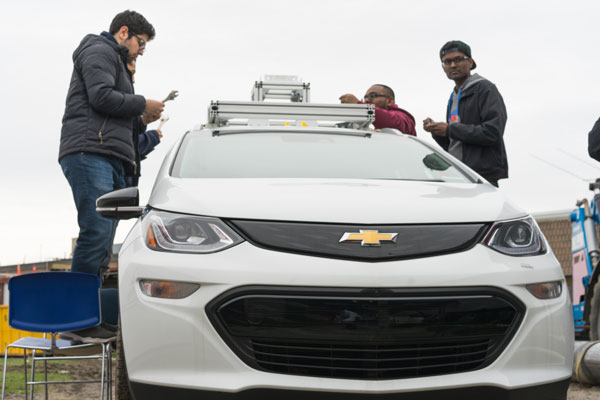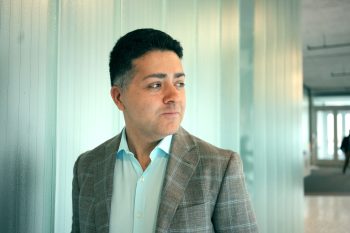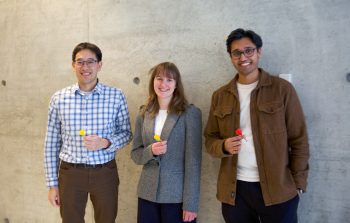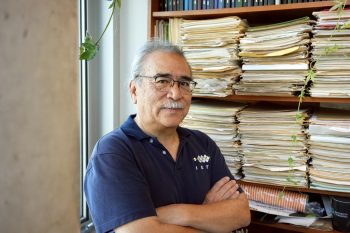This story is the fifth in a news series on artificial intelligence and machine learning.
A new Chevrolet Bolt vehicle has just arrived at the University of Toronto’s Institute for Aerospace Studies. Now, a student team has until April to teach it to drive itself.
U of T Engineering is one of just eight schools from across North America selected to participate in the AutoDrive Challenge™, a new intercollegiate autonomous vehicle competition. Sponsors include General Motors, the Society of Automotive Engineers (SAE) and a number of other companies that produce hardware and software for self-driving cars.
More than 50 students have joined the U of T Engineering team, named aUToronto. They include both undergraduate and graduate students, in disciplines ranging from electrical engineering to aerospace engineering and computer science.
The challenge will take place over three years, with teams assembling each spring to demonstrate their progress in reaching key milestones. The first of these competitions will take place in Yuma, Ariz., and is scheduled for April 2018.
By then, the car needs to be able to complete three tasks: first, it must drive down a straight road while staying in its lane. Second, it must navigate around static obstacles, such as pylons, by changing lanes according to the rules of the road. Finally, it must recognize stop signs and stop within a safe distance.
“It’s going to be a challenge to meet that deadline, but I think we have a good shot,” says Keenan Burnett (UTIAS MASc candidate), the technical team lead for aUToronto.
The car, which the team has named Zeus, will be outfitted with a variety of advanced sensors donated by the project’s sponsors. These include a state-of-the-art 3D lidar system — which uses laser light to detect objects in a similar way to how radar uses sound — as well as 2D lidar, monocular vision, stereo vision, radar, and GPS and inertial sensors.
It’s up to the team’s software experts to process the information produced by these sensors and convert it into commands that tell the car when to turn, accelerate and brake. In the interest of both safety and efficiency, the team plans to start with software and algorithms that are already in widespread use.

“If we can find something that’s open-source and available, and that already works, we’ll use it,” says Mona Gridseth (UTIAS PhD candidate), the team’s senior autonomy architect. “But some of it we will definitely have to program ourselves.”
For Gridseth, who studies mobile robotics, the project is a unique opportunity to branch out from her sharp research focus. “It enables me to familiarize myself with a lot of topics that I wouldn’t be able to do through my thesis alone,” she says.
“This project enables students to apply their knowledge and get hands-on robotics experience,” says Professor Angela Schoellig (UTIAS), the principal faculty advisor for the team. “Practical experience is really important to advance the field of robotics and develop novel robotics applications. It also makes our students even more attractive for companies working in this space.”
Burnett agrees. “The self-driving industry is really hot right now,” he says. “If you are a software engineer or a mechanical engineer who has some practical experience in this area, I think that makes you an attractive applicant for a job. AutoDrive enables us to do that, plus it’s just a lot of fun.”



